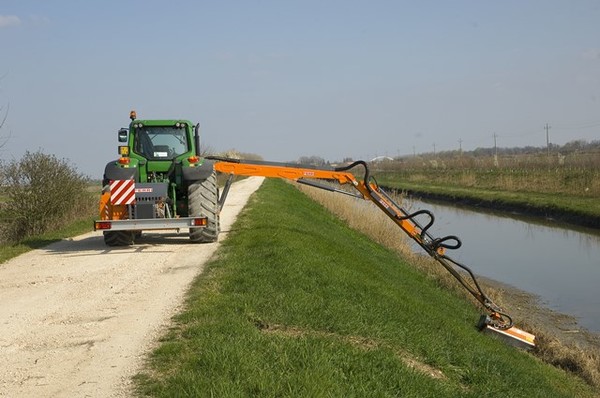
Care and prevention for land illnesses
A conference on analyses of the phenomena threatening the land and the environment was held in Bari in the Agrilevante setting. Fires, disintegration and drought afflict enormous areas of the Italian territory where it is up to multi-functional farming to care for the land. A fundamental role is played by agricultural machinery capable of providing suitable technologies or purpose-built machinery for these maintenance tasks
The seriousness of environmental risks rose this current year as never before in the past. These were prolonged drought, shortages of water resources not only for agriculture but also for industry and public use, widespread forest fires as well as sudden and violent floods in the spring and summer, all of which focused attention on these ongoing problems for Italy. These were the issues taken up at a conference on Disintegration, Fires, Drought: Emergencies and Strategies held in the Bari trade fair hosting Agrilevante, an international exposition of agricultural machinery and technologies. Taking part were authoritative academic figures and researchers. Danilo Monarca of the University of Tuscia reported that “Every year, wildfires destroy an average of 90,000 hectares of vegetation and this phenomena carries the risk of cyclical interaction beween environmental stability and the climate and society. Due to the vast farmlands and pasturage areas abandoned, Italian woodlands are expanding at the rate of about 30,000 hectares a year to create pre-forest conditions and woods coverage which are especially vulnerable to fires.” Also explained was that abandoning agricultural areas results in a lack of maintenance of the land and has an impact on the occurrence of landslides. It was said that 20% of Italian territory is classified as at risk of landslides and as many of 7,145 communities, 88% of the total, are located in “red zones” of territories where hydro-geological alarm is the highest. Environmental risks extend also to the consumption of soil for the progressive deterioration of agricultural lands which have deprived Italy of an important asset. Monarca stressed that in 2016 alone, this phenomenon involved 2.3 million hectares equal to 7.6% of the nation’s territory. The Lombardy, Veneto and Campania regions have been hit the hardest. The loss of farmland also has repercussions on the climate, especially on the microclimate. It was noted, for example, that the phenomenon of heat in urban islands, with definitive differences between temperatures in cities and the countryside a few kilometers away, creates heat conditions especially in city centers. Francesco Gentile from the University of Bari said, “The summer of 2017 will go down in history as one of the driest ever. The month of June saw a reduction of rainfall by 50% under average precipitation. And this is not isolated data but a trend featuring a spring decidedly drier than the average.” Thus the country is in a condition of sufferance and evidently
A focus on Puglia
A conference managed by the Biohabitat Foundation and the EuD Engineering Technical Study was focused on policies for the defense of the Puglia Region land and especially on operations for preventing and coping with hydro-geographic disintegration. Nicola Scattarelli, speaking for the Capitanata Reclamation Consortium to present a project in process for work on the consortium’s land, declared, “For the purpose of countering disintegration, a regime of correct and timely operations are essential with reclamation and the cleaning of water courses.”








